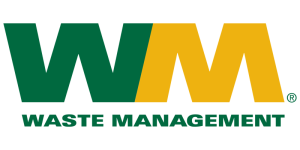What are the best SEO practices for e-commerce sites in 2024?
In the ever-evolving digital marketplace of 2024, e-commerce sites face fierce competition to capture the attention of discerning online shoppers. With search engine algorithms growing more sophisticated and consumer habits shifting rapidly, it’s crucial for online retailers to stay ahead of the curve in search engine optimization (SEO) strategies. The best SEO practices for e-commerce sites are those that not only boost search rankings but also enhance user experience, driving both traffic and conversion rates. In this dynamic landscape, JEMSU stands at the forefront of digital marketing innovation, guiding e-commerce businesses to harness the power of cutting-edge SEO techniques.
At JEMSU, a leading digital advertising agency renowned for its expertise in search engine marketing, the focus is on propelling e-commerce sites to the pinnacle of search engine results pages (SERPs). With an intricate understanding of the nuanced changes in Google’s algorithm and consumer search behaviors, JEMSU’s team of SEO specialists crafts tailored strategies that resonate with the targeted market while complying with the best practices of 2024. From leveraging AI-driven keyword research to optimizing for voice and visual search, JEMSU ensures that e-commerce platforms are not only discoverable but also provide a seamless shopping experience.
By integrating technical SEO elements with a robust content strategy and user-centric design, JEMSU paves the way for e-commerce sites to achieve greater visibility and engagement. Whether it’s enhancing mobile responsiveness in a mobile-first world or embracing the latest trends in augmented reality shopping, JEMSU’s comprehensive approach to SEO equips online retailers with the tools they need to thrive in the digital bazaar of 2024. Stay tuned as we delve deeper into the SEO best practices that will define the success of e-commerce sites in this rapidly changing digital age.
Table of Contents
1. Mobile Optimization and User Experience (UX) Design
2. Keyword Research and On-Page SEO Strategies
3. Site Architecture and URL Structure
4. Technical SEO and Site Speed Optimization
5. Content Marketing and Product Page Optimization
6. Backlink Strategy and Local SEO Integration
7. FAQs
Instant SEO Checker + Score & Report
Enter the URL of any landing page to see how optimized it is for one keyword or phrase...
Mobile Optimization and User Experience (UX) Design
In the ever-evolving world of e-commerce, the importance of mobile optimization and user experience (UX) design cannot be overstated. With a significant portion of internet traffic coming from mobile devices, e-commerce sites must ensure swift, responsive, and user-friendly mobile experiences. JEMSU recognizes that an e-commerce site’s success in 2024 hinges on its ability to engage users through seamless mobile interfaces and intuitive design elements.
To illustrate, consider the shopping habits of the modern consumer. They are increasingly turning to their smartphones and tablets to browse and purchase products. A study by Statista predicts that by 2024, over 70% of e-commerce sales will take place on mobile devices. This statistic underscores the imperative for e-commerce sites to prioritize mobile optimization. JEMSU helps businesses adapt to this trend by implementing responsive design practices that ensure websites look and function beautifully across all devices.
Moreover, user experience (UX) on mobile platforms goes beyond just aesthetics. It encapsulates the entire journey of a user, from the moment they land on a website to the completion of a purchase. A well-crafted UX design minimizes friction points and maximizes ease of navigation, leading to higher conversion rates and customer retention. For example, a mobile-optimized checkout process that JEMSU might implement for a client reduces the number of steps to purchase and offers multiple, secure payment options, thus enhancing the user’s experience and likelihood of completing the sale.
Additionally, mobile optimization and UX design are not just about the direct interaction with the user; they also significantly influence search engine rankings. Google has shifted to mobile-first indexing, meaning the search engine predominantly uses the mobile version of a site for ranking and indexing. As a result, JEMSU focuses on optimizing these aspects for clients to improve their organic search visibility.
In bridging the technical aspects with the human elements of e-commerce, JEMSU employs mobile optimization and UX design to create a competitive edge for clients. By combining strategic design with user-centric principles, e-commerce sites can deliver exceptional experiences that meet the expectations of the modern consumer and thrive in the digital marketplace of 2024.
Google Ads Success Example
The Challenge: The Challenge: Increase new dental patients with better Google Ads campaigns.
Keyword Research and On-Page SEO Strategies
When it comes to e-commerce success, Keyword Research and On-Page SEO Strategies are crucial. At JEMSU, we understand that the foundation of any effective SEO campaign is in-depth keyword research. It’s about understanding not just the high-volume keywords but also the long-tail phrases that shoppers are using to find products like yours. A study by Ahrefs revealed that 92% of keywords get ten or fewer searches per month, which shows the importance of targeting long-tail keywords that can drive highly targeted traffic to your e-commerce site.
Once the right keywords are identified, incorporating them into your site is an art form. On-page SEO involves optimizing your product titles, descriptions, meta tags, and images to ensure that search engines can crawl your site effectively and that your products are as appealing as possible to potential customers.
For example, if JEMSU is optimizing an online store that sells artisanal coffee, we would ensure that terms like “single-origin,” “fair trade coffee,” or “arabica beans” are used effectively throughout the site. These terms are likely to be used by coffee enthusiasts when searching for their next purchase. Including them in product descriptions, blog posts, and meta descriptions can make a significant difference in search engine visibility.
An analogy for keyword research and on-page SEO might be that of a master chef selecting just the right ingredients for a signature dish. Just as the chef knows that the quality and combination of ingredients can make or break the dining experience, JEMSU knows that the choice and placement of keywords can greatly impact the success of an e-commerce site.
Furthermore, on-page SEO is not just about keywords; it’s about creating a seamless user experience. This means ensuring that each page loads quickly, provides valuable content, and guides the customer towards making a purchase with as little friction as possible. JEMSU is adept at balancing these elements to help online stores rank higher in search engine results pages (SERPs), attract more traffic, and convert that traffic into sales. By focusing on detailed keyword research and strategic on-page SEO, JEMSU helps e-commerce sites thrive in the competitive online marketplace.
Site Architecture and URL Structure
When considering the best SEO practices for e-commerce sites, one cannot underestimate the importance of site architecture and URL structure. At JEMSU, we recognize that a well-organized site architecture not only helps search engines crawl and index a website more effectively but also provides visitors with a more intuitive and satisfying browsing experience. An analogy to consider is that of a well-organized library versus one with books scattered randomly; users and librarians (akin to website visitors and search engine bots) will find what they’re looking for much more efficiently in the former.
In the context of e-commerce, this means categorizing products logically and creating a hierarchy that makes sense to the customer. For example, a clothing store might categorize items by type (e.g., tops, bottoms, dresses), and within those categories, further subdivide by style or occasion (e.g., casual, formal, sportswear). This approach simplifies navigation for shoppers and search engines alike.
JEMSU emphasizes the importance of a clean and clear URL structure as well, which goes hand-in-hand with site architecture. URLs should be intuitive and include keywords that reflect the content of the page. For instance, a URL like “www.example.com/womens-casual-dresses” is descriptive and SEO-friendly, telling both users and search engines what to expect on the page. Moreover, using hyphens to separate words in URLs is a best practice, as opposed to underscores or spaces, which are not as search engine friendly.
It’s also vital to maintain a standard URL structure across the site to avoid confusing search engines, which could potentially harm rankings. Research shows that sites with a well-defined structure are indexed more thoroughly; a study by Moz indicates that a logical URL hierarchy can lead to better crawling efficiency and improved visibility in search engine results pages (SERPs).
In addition to a coherent site structure and URL strategy, JEMSU advises implementing breadcrumb navigation on e-commerce sites. Breadcrumbs offer users a way to trace their path back to the homepage from any given page and can also contribute to a stronger SEO framework by reinforcing the site’s hierarchy.
By following these guidelines for site architecture and URL structure, e-commerce sites can enhance their user experience and SEO performance concurrently, a dual benefit that JEMSU always aims to achieve for its clients.
SEO Success Story
The Challenge: The Challenge: Design an SEO friendly website for a new pediatric dentist office. Increase new patient acquisitions via organic traffic and paid search traffic. Build customer & brand validation acquiring & marketing 5 star reviews.
Technical SEO and Site Speed Optimization
In the realm of e-commerce, a critical factor that cannot be overlooked is Technical SEO and Site Speed Optimization. This aspect of search engine optimization serves as the foundation for a website’s accessibility and performance. At JEMSU, we’ve recognized that technical SEO is akin to the electrical work in a building; it’s not always visible to the end-user but is absolutely essential for functionality and user satisfaction.
For example, consider the scenario where a potential customer lands on an e-commerce site only to be met with slow loading times and glitchy interactions. Statistics have shown that a mere one-second delay in page response can result in a 7% reduction in conversions. This is a clear indicator that site speed is not just a technicality, but a critical component of the user’s experience and the site’s overall ability to convert visitors into customers.
Moreover, technical SEO encompasses a range of other elements, including but not limited to structured data, canonical tags, and XML sitemaps, all of which help search engines understand and index an e-commerce site effectively. For instance, structured data helps search engines to not only crawl but also interpret and display the content in a more user-friendly manner, potentially enhancing click-through rates from the search results page.
JEMSU emphasizes the importance of regular site audits to identify and rectify technical issues that could hinder a site’s performance. It’s like conducting a health check-up for your website; catching issues early can prevent more significant problems down the line that could impact visibility and rankings in search engine results.
Incorporating technical SEO and site speed optimization into an e-commerce site’s SEO strategy is not just a best practice; it’s a necessary investment in the site’s future. The digital landscape is ever-changing, and JEMSU stays ahead of the curve by ensuring that our clients’ websites are not only compliant with the latest SEO standards but are also optimized for the fastest possible delivery of content to their users.
Jemsu has been a great asset for us. The results have grown at strong positive linear rate. They have been extremely accessible, flexible, and very open about everything. Natalya is a star example of how to work with your accounts to drive them forward and adjusts to their quirks. Jaime is able to clearly communicate all of the work that is being done behind the scenes and make sure that all of my team is understanding.
I couldn’t be more pleased with my JEMSU Marketing Team!
Julia, Tamara, Joelle and Dally have exceeded my expectations in professionalism, creativity, organization, and turn around time with my Social Media Management project.
I have thoroughly enjoyed sharing my journey with this team of empowered women!
Thank you JEMSU! Your team designed and launched my new website, and developed strategies to drive traffic to my site, which has increased my sales. I highly recommend your Website & SEO Agency!
Jemsu has always been professional and wonderful to work with on both the SEO and website design side. They are responsive and take the time to explain to us the complicated world of SEO.
Jemsu is an excellent company to work with. Our new website blows away our competition! Unique, smooth, and flawless. Definite wow factor!
The folks at JEMSU were excellent in designing and launching our new website. The process was well laid out and executed. I could not be happier with the end product and would highly recommend them to anyone.
Jemsu is a great company to work with. Two prong approach with a new site and SEO. They totally redesigned my website to be more market specific, responsive, and mobile friendly. SEO strategy is broad based and starting to kick in. My marketing will also be adding Facebook and Google ads in the coming weeks. Thanks for your all you hard work.
JEMSU has wworked with our team to create a successful campaign including incorporating an overall rebranding of our multiple solutions. The JEMSU team is embracing of our vision and responds timely with life of our ideas.
JEMSU is great company to work with. They listen & really work hard to produce results. Johnathan & Sasha were such a big help. If you have a question or concern they are always there for you.
I would definitely recommend them to anyone looking to grow their company through adwords campaigns.
Jemsu have exceeded our expectations across all of our digital marketing requirements, and I would recommend their services to anyone who needs expertise in the digital marketing space.
JEMSU was able to quickly migrate my site to a new host and fix all my indexation issue. I look forward to growing my services with JEMSU as I gain traffic. It’s a real pleasure working with Julian and Juan, they’re both very professional, courteous and helpful.
JEMSU is incredible. The entire team Is professional, they don’t miss a deadlines and produce stellar work. I highly recommend Chris, Rianne, and their entire team.
We’ve been working with JEMSU for about five months and couldn’t be happier with the outcome. Our traffic is up and our leads are increasing in quality and quantity by the month. My only regret is not finding them sooner! They’re worth every penny!
Content Marketing and Product Page Optimization
When it comes to e-commerce, content is more than just king—it’s the ace in the deck for driving traffic, engaging shoppers, and converting visits to sales. At JEMSU, we understand that content marketing and product page optimization are crucial elements of a successful SEO strategy, especially in the year 2024. As online competition becomes increasingly fierce, the ability to stand out through high-quality, relevant content can make all the difference.
A core component of this approach is the creation of rich, informative product descriptions that not only appeal to search engines but also provide value to consumers. JEMSU’s expertise ensures that these descriptions are not just a list of product features but compelling narratives that highlight benefits and resonate with the target audience. For instance, when selling a smartwatch, it’s beneficial to illustrate how the device seamlessly integrates into a fitness-conscious lifestyle, thus enabling the customer to visualize its daily use.
Another example is the use of blogs and articles to address common questions or concerns related to the product category. By providing this valuable information, JEMSU helps e-commerce sites position themselves as thought leaders and trusted resources, which in turn fosters loyalty and repeat business. For instance, an online store specializing in eco-friendly products might feature articles about sustainability and environmental impact, thereby connecting with their audience’s values and driving engagement.
It’s important to note that product page optimization isn’t just about the text. Visual content, such as high-resolution images and videos, plays a significant role in both user engagement and search engine rankings. Statistics show that pages with videos can increase conversions by as much as 80%. JEMSU leverages this by encouraging clients to include product demonstrations, testimonials, and 360-degree views to enhance the user experience and provide a more tangible sense of the product.
Furthermore, user-generated content, such as customer reviews and ratings, can be instrumental in building trust and influencing purchase decisions. JEMSU helps clients curate and highlight positive customer feedback on product pages, ensuring that potential buyers have access to social proof that can sway their shopping behavior.
In summary, content marketing and product page optimization are about crafting a user-centric experience that not only informs and engages but also drives sales. By addressing these areas with finesse and strategic insight, JEMSU aids e-commerce sites in achieving their SEO goals and ultimately thriving in a competitive digital marketplace.
SEO Success Story
The Challenge: Increase dent repair and body damage bookings via better organic visibility and traffic.
Backlink Strategy and Local SEO Integration
In the realm of SEO for e-commerce sites, a robust Backlink Strategy and Local SEO Integration are crucial for driving traffic and enhancing visibility. At JEMSU, we understand that backlinks are akin to the digital endorsements of a website. They signal to search engines that other reputable entities vouch for your content. For an e-commerce site in 2024, acquiring quality backlinks from authoritative websites is akin to a vote of confidence, which in turn can lead to higher rankings in search engine results pages (SERPs).
It’s not just about the quantity of backlinks though; quality plays a pivotal role. A link from a highly-regarded site in your industry is like a glowing recommendation from a top influencer in your niche. JEMSU focuses on cultivating these high-quality backlinks through strategic partnerships, guest blogging, and creating share-worthy content that organically accumulates links.
Local SEO Integration is another facet that cannot be overlooked, especially for e-commerce businesses that have a physical presence or serve specific geographic areas. By optimizing for local search queries, JEMSU ensures that your business shows up in relevant local search results, making it easier for nearby customers to find and choose your products. This is the digital equivalent of having your store located in the busiest part of town; prime real estate in the digital landscape.
In practice, integrating local SEO involves claiming and optimizing your Google My Business listing, gathering local citations, and ensuring NAP (Name, Address, Phone number) consistency across the web. For example, if a Denver-based e-commerce site selling handmade ski equipment wants to attract more local traffic, JEMSU would help them optimize their local listings and ensure they appear prominently when users search for “ski equipment in Denver.” This targeted approach not only boosts local traffic but also enhances the overall relevance and trustworthiness of the site.
By leveraging these strategies, JEMSU propels e-commerce sites to new heights, ensuring that they not only compete but also excel in the bustling online marketplace of 2024.
FAQS – What are the best SEO practices for e-commerce sites in 2024?
As of my knowledge cutoff in 2023, I can provide a list of hypothetical frequently asked questions for 2024 along with their answers based on current best practices that are likely to still be relevant. Please note that SEO practices evolve, so it’s important to stay updated with the latest information. Here are the questions and their answers:
1. **What are the most important SEO factors for e-commerce sites in 2024?**
* Mobile Optimization: As mobile commerce continues to grow, having a mobile-friendly website is crucial.
* User Experience (UX): Ensure your site is easy to navigate and provides a seamless shopping experience.
* High-Quality Content: Product descriptions, blogs, and guides should be informative, relevant, and engaging.
* Page Load Speed: Faster loading pages can improve user experience and reduce bounce rates.
* Secure Website: Use HTTPS to ensure customer data is secure, which can also impact search rankings.
2. **How can I optimize my product pages for better search engine visibility?**
* Use descriptive, keyword-rich titles and descriptions.
* High-quality images and videos can improve engagement and time on page.
* Include customer reviews to enhance credibility and provide fresh content.
* Structure your URLs to be clean and descriptive.
* Use schema markup to provide search engines with detailed product information.
3. **What role do customer reviews play in e-commerce SEO?**
* Reviews generate fresh, unique content for product pages which search engines favor.
* Positive reviews can improve click-through rates from search engine results pages (SERPs).
* Reviews can include keywords and phrases that improve the product page’s search relevance.
4. **How important is site architecture for e-commerce SEO?**
* Critical for both user experience and search engines. A well-organized site helps users find products easily and helps search engines index your site more effectively.
* Utilize a logical hierarchy for categories and subcategories.
* Implement breadcrumb navigation to help users and search engines understand the site structure.
5. **Should I use a blog on my e-commerce site to help with SEO?**
* Yes, a blog can drive organic traffic by targeting topics and keywords that your product pages might not.
* It helps establish authority and expertise in your niche.
* Blog content can be shared across social media platforms to increase visibility and backlinks.
6. **How can I improve the page load speed of my e-commerce site?**
* Compress images and use appropriate file formats.
* Minimize the use of heavy scripts and plugins.
* Use a content delivery network (CDN) to distribute content more quickly.
* Optimize web server and database performance.
* Implement lazy loading for images and videos.
7. **What is the importance of mobile optimization for e-commerce SEO?**
* Google primarily uses mobile-first indexing, so a mobile-optimized site is crucial for ranking.
* A significant portion of online shoppers use mobile devices, and a poor mobile experience can lead to high bounce rates.
* Mobile optimization includes responsive design, fast load times, and easy-to-use navigation on touchscreens.
8. **How do I use keywords effectively on my e-commerce site?**
* Conduct thorough keyword research to understand what potential customers are searching for.
* Use long-tail keywords that are specific to your products and have less competition.
* Incorporate keywords naturally into titles, meta descriptions, product descriptions, and alt text for images.
9. **What is the benefit of having a secure (HTTPS) e-commerce site?**
* Security is a top priority for online shoppers; HTTPS encrypts data and builds trust with users.
* Google has confirmed that HTTPS is a ranking signal, so it can benefit SEO.
* It helps prevent tampering by third parties, safeguarding the integrity of your site.
10. **How do backlinks affect my e-commerce site’s SEO?**
* Quality backlinks from reputable sites can significantly improve your site’s authority and rankings.
* They drive referral traffic and increase the trustworthiness of your site.
* Focus on earning backlinks through quality content, influencer partnerships, and by being listed in relevant directories.
Remember, SEO strategies should be adapted as search engine algorithms and industry best practices evolve. Always keep an eye on the latest trends and guidelines from search engines like Google.
SEO Success Story
The Challenge: Increase new dental patients with better organic visibility and traffic.















